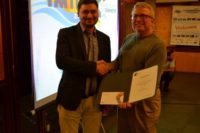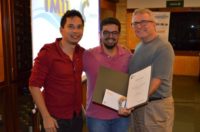Applied research in the area of green chemistry can be most effective if it is directed at solving problems that cause significant environmental impact or inefficiencies in current human activities. It is therefore necessary to identify those problems.
Green Chemistry is planning a virtual special issue on the topic of the greatest needs for green chemistry research, in the hope that this information will be of service to the community. The issue will encompass Perspectives papers that identify the top green needs in any one area.
We are therefore appealing for your thoughts on what are the most pressing needs for green chemistry research:
- What fields of research should be topics of such papers? (could be a field of economic activity, a field of research, a kind of impact, or a class of chemicals/processes/products)
- Who would you recommend as the author(s) for the papers you’ve suggested above?
We welcome self-nominations and proposals for Perspectives which fall into this topic. Please note that all papers will be subject to the usual initial assessment and peer review processes.
Fill in the survey online at rsc.li/greenchemneeds by 31 October 2017
You can also contact us at green-rsc@rsc.org












 The
The 







